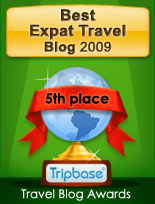in the snow
In my new Beşiktaş neighborhood in Istanbul, not five minutes from my house, is the only Ottoman Imperial Palace Hotel in Turkey. It sits right on the Bosphorus shoreline. In Turkish, it is called Çirağan Sarayı Kempinski. In English:
Çirağan Palace Kempinski. It boasts exquisite views once reserved exclusively for the Sultans.
The original Imperial Ottoman Palace
as seen from the Bosphorus.
The Grand Ballroom,
frequently the site for weddings,
is on the top right
enabling guests to get a magical view of the grounds
and the Bosphorus Bridge
while dancing the night away.
This very special palace
also holds eleven magical suites.
I am crazy for historic luxury hotels and love to hear the stories of a property well run, especially those properties beloved by guests, community, and staff alike. Properties like this are larger than their mission - indeed, I would go so far to say these places are as close as businesses can come to having a soul.
I've visited many iconic hotels like this in my travels. To name a few favorites: the Banff Springs Hotel, Chateau Lake Louise, and Empress Hotel in Western Canada, the Homestead and Greenbriar, in Virgina, the Pink Hawaiian, on the island of Oahu in Hawaii, and the Broadmoor in Colorado Springs, Colorado.
You can really tell if someone knows Istanbul, by whether or not they know this hotel. Only the most erudite Americans do, as Kempinski, the hotel operating company that runs it, runs hotels in
locations exotic to the American traveler.
Indeed, this was my first introduction to Kempinski. I knew for them to be trusted with the operating
the premier hotel property in Istanbul, a city Napoléon deemed worthy of serving as "capital of the world," they had been judged incredibly worthy stewards.
John F. Kennedy Jr. and Carolyn Bessette
on their wedding day
Some Americans already knew of the property though. The lobby walls are filled with photos of celebrities who have chosen to stay there.
John F. Kennedy Jr. brought Carolyn Bessette here
on their honeymoon on the recommendation of no less a style icon than his mother, Jacqueline Bouvier Kennedy Onassis.
Oprah stayed here when she took her entire staff and their families, 1,600 people, on a 10-day Mediterranean cruise to thank them for making her show such a success. She threw a fabled party here for her entire crew at the hotel complete with
whirling dervishes and an
Ottoman Mehteran band. The original palace boasts an jaw-droppingly-gorgeous grand staircase which made it the perfect place for her to make a sweeping entrance with everyone going wild.
The Hotel Lobby
where guests are greeted
by smiling, professional staff
and the smell of beautiful flowers
exquisitely arranged
The outdoor infinity pool
overlooking the Bosphorus
In keeping with the
international clientele
of the hotel,
pool safety guidelines are posted in
Turkish, English, and German.
The Imperial Palace is straight on
in the above photo
along the Bosphorus
with the
newer hotel facility
to the right
The pool, the palms, the placid water -
all of it sends one silent signal: relax.
The view to the left
if standing on the shoreline.
And yes, it is possible to arrive by boat.
Entering the hotel and walking the hotel grounds immediately began to increase my serenity. I could feel my whole body slowing down in response to the timeless views of shipping traffic plying the Bosphorus.
To the right of the hotel, ferries delivered their fares to appointments on the European side. To the left, is the Örtakoy Mosque, currently being renovated and hidden behind curtains. Behind the Mosque is the iconic Bosphorus Bridge.
The East Garden
While walking the grounds I couldn't help but think of another American celebrity. I thought Martha Stewart would love the orderly allee of palm trees in the East Garden that silently signal prosperity. Each one was manicured with nary a cuticle of palm bark astray and lush with fertile seed pods bursting with demands for a chance at life.
Showing off the long-term outlook of the management, another allee of plantain trees was planted in the West Garden. One of the pleasures of driving up to the hotel is driving through a several block long allee of plantain trees that line the corniche road called Çirağan Caddesi. Currently, this garden allee of plaintains in between the hotel and the Bosphorus was merely at the adolescent stage. In 100 years, they would be spectacular. I wished them well as they would need luck to survive the relentless quest for unimpeded views of the Bosphorus.
After enjoying the grounds and taking in their beauty, it was time to go find the spa and enjoy my hammam, Çirağan Palace-style, courtesy of the hotel. Cinar, PR Department head for the Çirağan Palace Kempinski hotel had said with a laugh, "just talking about hammams makes me relax." I couldn't wait to experience this incredible Ottoman gift to the world.
My first Hammam in Istanbul at the Çirağan Palace Kempinski Hotel, Part Two
Let's be friends on Facebook. Look for Empty Nest Expat.
All photos courtesy of Çirağan Palace Kempinski































































 Who links to me?
Who links to me?
